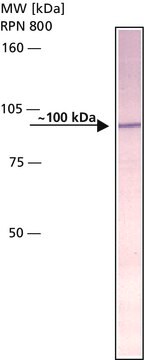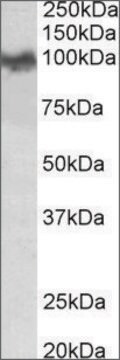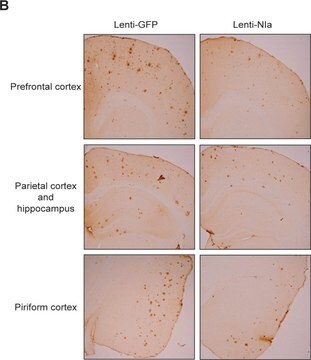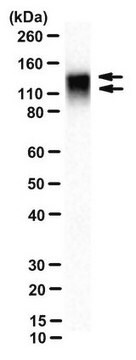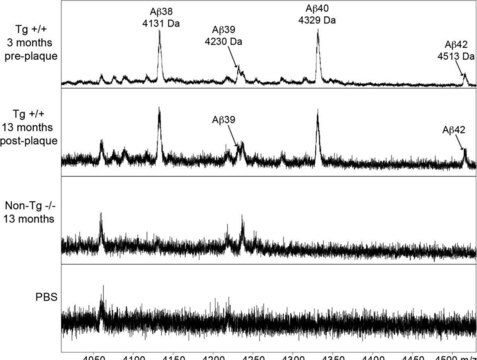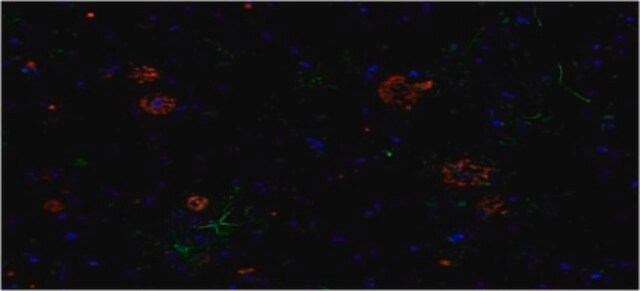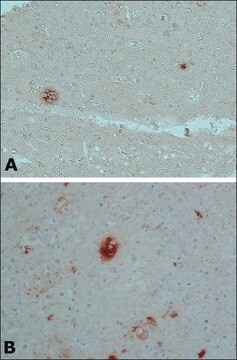MAB349
Anti-Amyloid Precursor Protein Antibody, A4(695), clone 1.D5
clone 1.D5, Chemicon®, from mouse
Sinónimos:
Alz-90
About This Item
Productos recomendados
biological source
mouse
Quality Level
antibody form
purified immunoglobulin
antibody product type
primary antibodies
clone
1.D5, monoclonal
species reactivity
human, rat
manufacturer/tradename
Chemicon®
technique(s)
western blot: suitable
isotype
IgG1
NCBI accession no.
UniProt accession no.
shipped in
wet ice
target post-translational modification
unmodified
Gene Information
human ... APP(351)
Specificity
Immunogen
Application
Neuroscience
Neurodegenerative Diseases
Optimal working dilutions must be determined by the end user.
Westen Blot Protocol for MAB349
1) After blotting the SDS-PAGE gel onto nitrocellulose, incubate at room temperature for one hour in 1% PBS in 0.1 mol/L PBS, pH 7.2, to block non-specific background.
2) Incubate the Western blot with MAB349 (10-20 μg/mL) at +4°C overnight shaking well.
3) Wash the Western blots 2 times in PBS-Tween 0.05% for ten minutes. Wash one time in PBS.
4) Incubate the blots with anti-Mouse IgG (Chemicon AP124) for one hour at room temperature.
5) Repeat step #3.
6) Incubate in peroxidase-anti-peroxidase [PAP] (Chemicon PAP14) according to manufacturers directions.
7) Repeat step #3.
8) Incubate in 4-chloro-1-napthol for twenty minutes at room temperature.
9) Repeat step #3.
Physical form
Storage and Stability
Other Notes
Legal Information
Disclaimer
¿No encuentra el producto adecuado?
Pruebe nuestro Herramienta de selección de productos.
Optional
Storage Class
10 - Combustible liquids
wgk_germany
WGK 2
flash_point_f
Not applicable
flash_point_c
Not applicable
Certificados de análisis (COA)
Busque Certificados de análisis (COA) introduciendo el número de lote del producto. Los números de lote se encuentran en la etiqueta del producto después de las palabras «Lot» o «Batch»
¿Ya tiene este producto?
Encuentre la documentación para los productos que ha comprado recientemente en la Biblioteca de documentos.
Nuestro equipo de científicos tiene experiencia en todas las áreas de investigación: Ciencias de la vida, Ciencia de los materiales, Síntesis química, Cromatografía, Analítica y muchas otras.
Póngase en contacto con el Servicio técnico